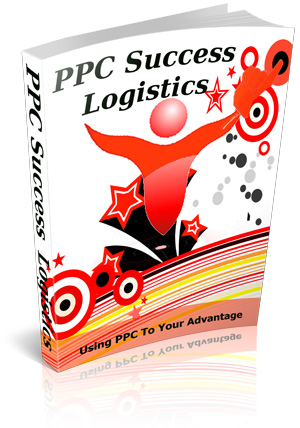PPC Success: Implementation Strategies E-Book summary and Free Download
This document provides a detailed review of the main themes, important ideas, and facts presented in the provided excerpts from “PPC Success Logistics ebook,” a guide on leveraging Pay-Per-Click (PPC) advertising.
Main Themes and Important Ideas:

The core theme of “PPC Success Logistics” revolves around understanding and strategically implementing PPC advertising to drive targeted traffic, generate leads, and ultimately increase revenue. The document systematically breaks down the key stages and considerations involved in a successful PPC campaign.
Key Chapters and Their Core Messages:

- Foreword: Introduces PPC as a potentially stressful but advantageous tool for targeting customers. It emphasizes the need for a clear understanding of seasonal sentiments and current trends. It sets the stage for providing the necessary knowledge to utilize PPC effectively: “Get everything you need to know here.”
- Chapter 1: PPC Basics: Explains the fundamental concept of PPC, where advertisers pay website owners when their ads are clicked. It highlights the buying cycle (research, shop, purchase) and suggests segmenting keywords based on these phases. The importance of a high-quality landing page and choosing a suitable search engine player are also mentioned. It notes the budget-driven ranking of ads and the potential for PPC to be a lucrative revenue stream.
- Chapter 2: Determine Your Target Market: Stresses the critical importance of identifying and focusing on the audience most likely to be interested in the products or services to avoid wasted funds and maximize profit margins. Keyword selection and ad creation should be tailored to this target market. Seasonal target campaigns are also highlighted as potentially beneficial. The chapter concludes by emphasizing the cost-effectiveness and transparency of PPC compared to other tools when the target market is well-defined: “Because the target market ensure better cost effective measures the idea of having the most effective and accountable tool is often acknowledged within the PPC platform.”
- Chapter 3: Choose Reputable PPC Providers: Underscores the risk of losing money through poor campaign management and the necessity of selecting reliable providers. Reputable providers possess the expertise to set up and manage campaigns effectively, ensuring the marketing budget is not wasted and conversion rates are high. They also assist with effective keyword searches and should offer good after-sales service, including addressing issues like click fraud and providing necessary adjustments.
- Chapter 4: Determine What PPC Provider Has The Best Features For Your Campaign: Emphasizes the need to carefully evaluate the features offered by different PPC providers to best suit individual campaign needs. Key features include the use of relevant keywords (including negative keywords to refine traffic), strategies to promote the brand (separating branded and non-branded ads), and ensuring visitors navigate the entire website easily, not just the homepage: “One the visitor enters the site everything should be done to ensure the easy access to the material throughout the site as this should eh goal of the actual campaign basics.”
- Chapter 5: Learn How To Use The Filter Tools At The PPC Provider: Focuses on the practical application of filter tools offered by PPC platforms. It highlights the importance of defining campaign goals (selling products, generating leads, etc.) before utilizing these tools. The use of Excel for managing campaigns and keyword research tools provided by major search engines (Google, MSN) are mentioned as valuable resources for filtering keywords based on relevance and cost. The goal is to avoid unwanted clicks and ensure traffic has a higher potential for conversion.
- Chapter 6: Do Extensive Keyword Research: Emphasizes that successful PPC relies on thorough and focused keyword research. Identifying and optimizing specific words is essential for garnering the intended PPC results. While challenging, understanding the research process and identifying high-yield keywords is crucial for a competitive advantage. Keyword research should support overall search marketing efforts and drive profits. Tools like Word Stream’s Google keyword research tool are recommended for maximizing the effectiveness of chosen words: “Using other tools that provide assistance such as Word Stream’s Google keyword research too will make the researching a better profit-driving exercise of maximizing the words chosen.” Organizing keywords and evaluating their performance is also highlighted for eliminating non-performing ones.
- Chapter 7: Set A Budget And Stick To It: Addresses the challenge of budgeting for PPC due to fluctuating keyword bids. Strategies include estimating based on a percentage of online revenue. Budget optimizers offered by search engines (like Google Ads) can help maximize clicks within a set budget, though they don’t guarantee positioning. The importance of periodic budget review to ensure conversions and profits align with desired revenue is stressed. Consistency in adhering to the budget is crucial, and adjustments should be made with careful consideration. Potential issues like underspending, overspending, and seasonal changes should be anticipated.
- Chapter 8: Make Sure You Have Great Content When Someone Does Click: Highlights the importance of high-quality content on the landing page. While PPC effectively drives targeted viewers quickly, the content must match the ads and be informative and engaging to encourage further interaction and recommendations. Including relevant keywords in the URL is presented as an often-overlooked but beneficial practice. The landing page should deliver on the promises made in the advertisements: “The landing page should contain the information that was promised at the ads placements as the PPC method is used to access the material.”
- Chapter 9: You Have To Follow Up: Emphasizes the necessity of ongoing monitoring and follow-up for PPC campaigns to remain effective. Objectives like branding and prospect needs require constant attention. Common pitfalls to avoid include using a single campaign for all audiences, multiple campaigns for one product, duplicating keywords, and lacking proper tracking tools. Conversion tracking is crucial for understanding campaign performance. Follow-up should also extend to ensuring customer satisfaction after a purchase and addressing any issues. Periodic follow-up, regardless of campaign performance, allows for learning and making necessary adjustments.

Wrapping Up: Concludes by reiterating the importance of using PPC to attract engaged traffic for increased visibility and revenue. It suggests the reader now has the necessary tools and knowledge to begin.
This briefing document summarizes the core principles and practical advice presented in the excerpts of “PPC Success Logistics,” providing a foundational understanding of how to approach and manage PPC advertising campaigns effectively.convert_to_textConvert to source
